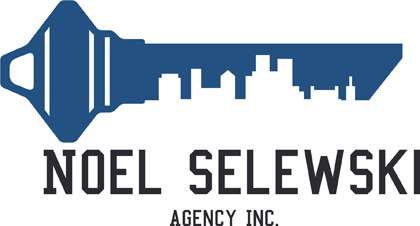Property owners need to make sure their investment remains safe regardless of what might happen. The best way to do this is by having insurance coverage on the property. Of course, there are different types of coverage available, and it may not always be obvious to know which options to choose. Working with an agent that can help people understand the differences and the best type of coverage for the property is essential. Below are some of the common types of coverage for different types of properties.
Dwelling Property Insurance in Colorado Springs
Dwelling coverage is part of a homeowner’s insurance policy that helps to pay for repair and rebuilding of the physical aspects of the home if damage occurs because of a covered hazard. Most of the standard policies will cover a range of different types of hazards. This includes fire and smoke damage, lightning strikes, wind, hail, vandalism, theft, falling objects, damage from the weight of snow, ice, and sleet, and explosions.
It is important to keep in mind that policies can differ. Although the above are the hazards that are commonly covered with dwelling property insurance in Colorado Springs, homeowners will want to check their policy to see what is and is not covered.
Some of the common hazards that are not covered by these types of policies include flood, sewer backups, and earthquakes. They will not cover damage that stems from improper maintenance of the home, either. Owners may want to consider buying additional coverage to help cover those types of events, just in case. It tends to be better to have more coverage and not need it than to have too little coverage in the event of a disaster.
Because the policies can differ so much from one to the other, owners must be careful when they are making their choice. They should make a list of the types of coverage they need and then speak with an agent to find the appropriate policy that will work for their needs. There are many options available to provide a wide range of coverage types.
Landlord Protection Insurance in Colorado Springs
Another type of insurance that a property owner may need is landlord protection insurance. Colorado Springs homeowners who are renting out their property can use this type of insurance to provide added protection to their homes. There are generally two different types of coverage. These include property and liability protection, and they work to provide some safety from financial losses.
The landlord protection insurance will help to cover the physical property that’s related to the home that is being rented out. It can include the dwelling, as well as any equipment that is on the property and is used to maintain it.
Coverage on the dwelling will help to pay for any repairs to the house, condo, or apartment if it is damaged by lightning, wind, fire, and other covered losses indicated in the policy. The coverage could also include detached structures on the rental property if the property has them. This might include a fence or a garage, for example.
Landlords will often leave equipment at the rental property that is used to help maintain the place. This might include a lawnmower or a snowblower, for example. If the equipment is damaged, the policy could help to cover that equipment. It’s important to note that this does not include any personal items that are left at the rented property and that aren’t used to help maintain that location.
Different insurance policies will have varying deductibles and limits. Often, each coverage will have a separate deductible and a separate limit. It’s possible to have policies with lower deductibles, but with higher prices and vice versa. The limit, which is the maximum amount the insurance will pay for a covered loss, can vary, as well. In most cases, the higher the limit, the higher the cost of the policy.
In addition to the property protection, landlord protection insurance purchased in Colorado Springs will also provide liability protection. This type of protection will help the landlord to pay for legal expenses or another person’s medical bills in the event they are injured on the rental property and the landlord is responsible. For example, if the property has not been properly maintained and has hazards that injure someone on the property, the liability insurance will help to cover legal and medical costs. There is generally not a deductible for a liability claim.
In addition to the above, there may be other types of coverage that a landlord might want to have for their property. These will often require additions to the policy, as they are not typically covered by a standard policy. Some of the coverage types that could be beneficial include coverage for vandalism and burglary, for example.
It’s also important to keep in mind what landlord protection insurance will not cover. These types of policies will not cover the tenants’ belongings. Tenants should have their own renter’s insurance for that type of coverage. Most policies will not cover breakdowns or maintenance of equipment on the property, such as the air conditioner or furnace. However, there are some policies available that will provide coverage for expensive items. Buyers that are interested in that type of coverage will want to check the options before buying.
Those landlords who live on the property and who rent out rooms at the home will not be eligible to get a landlord policy. These policies are reserved for properties that are not occupied by the owner.
Find the Right Insurance
Always take the time to work with an agent that can help explain all the policy options and that can find a carrier that provides just what is needed. Choose an agent that has plenty of experience and that can provide homeowners with the help they need for all of their coverage.
